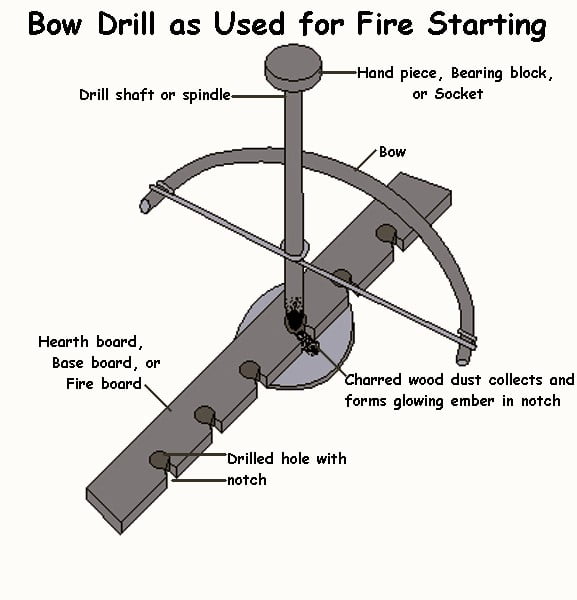Introduction- History Of Matchbox
From igniting campfires to lighting candles, the humble matchbox has played a pivotal role in human history. Its journey, however, is far more captivating than simply striking a flame. Prepare to embark on a voyage through time, where we’ll delve into the ancient origins of fire-starting, witness the evolution of matchsticks from primitive tools to modern marvels, and uncover the ingenious minds who revolutionized this seemingly simple yet essential invention.
As we navigate this historical terrain, we’ll answer intriguing questions like:
- Who invented matchsticks and when? Did they truly appear out of thin air, or were they the product of centuries of experimentation?
- What were matches made of? We’ll explore the fascinating materials that brought fire to our fingertips, from volatile concoctions to the ingenious safety match.
- Who introduced the safety match? This seemingly small innovation had a profound impact on safety and convenience, and we’ll meet the visionary who brought it to life.
Get ready to be intrigued by the science behind the spark, amazed by the ingenuity of inventors, and inspired by the impact this small invention has had on our daily lives. So, light your metaphorical torch and join us on this illuminating journey through the history of the matchbox!
How do Matchsticks work?
Friction Matches work through a chemical reaction that produces heat and a flame when the match head is struck against a rough surface. This chemical reaction involves several key components:
The Matchstick’s Anatomy:
- Match Head: This crucial component houses the chemical cocktail responsible for the initial spark. Its composition varies depending on the type of match, but generally includes:
- Oxidizing Agent: Often potassium chlorate (KClO3), this chemical provides the vital oxygen needed for combustion to occur.
- Fuel: Substances like sulfur (S) act as fuel sources, readily reacting with the oxygen released by the oxidizer.
- Binder: A glue-like substance holds the various components of the match head together.
- Additional elements: Depending on the match type, antimony sulfide may be present to aid in the ignition process, and dyes are often added for aesthetic purposes.
Striking the Spark:
- Friction Frenzy: Striking the match head against a designated rough surface, typically the matchbox striker strip coated with powdered glass or sandpaper, generates friction.
- Heat Generation: The friction creates localized heat, exceeding the ignition temperature of the match head components.
- Chemical Transformation: The heat triggers a chain reaction:
Potassium Chlorate Decomposition: The heat causes the potassium chlorate to decompose, releasing oxygen gas (O2):
2KClO3 → 2KCl + 3O2
Sulfur Combustion: The readily available oxygen ignites the sulfur, initiating combustion:
S + O2 → SO2 + heat
- Chain Reaction: The burning sulfur generates even more heat, further decomposing potassium chlorate and sustaining the reaction.
- Flame Formation: The intense heat creates a flame, fueled by the continuous burning of sulfur and the ongoing decomposition of potassium chlorate.
The Safety Advantage:
Traditional matches, while effective, posed a significant fire hazard due to the ease of accidental ignition. Safety matches address this concern by separating the fuel and oxidizer components:
- Match Head: In safety matches, the fuel is typically red phosphorus mixed with a binder.
- Striker Surface: The oxidizer, potassium chlorate, is located on the specially prepared striker surface of the matchbox.

It’s important to note that modern safety matches also have a striking surface coated with red phosphorus. When struck, a small amount of red phosphorus is abraded onto the match head. This serves as an additional ignition source, making it easier for the match to light. The safety feature of safety matches is that the chemical components are separated – the potassium chlorate is on the match head, and the phosphorus is on the striking surface. They only combine when struck, reducing the risk of accidental ignition.
A Timeline of the History of Matchsticks
The humble matchstick, despite its unassuming presence, boasts a rich and fascinating history spanning centuries. Let’s embark on a journey through time, exploring the key milestones that shaped this everyday marvel:
Prehistoric Sparks (Before 3000 BC):
- Fire as a Boon: Archaeological evidence, like the burnt remains of food and hearths at sites like Koobi Fora in Kenya, suggests early humans mastered fire control as early as 1 million years ago. This transformative discovery revolutionized their lives, providing warmth, protection from predators, a means to cook food, and a source of light, as evidenced by studies like “Firemaking in the Lower Paleolithic: Acheulian Tool Use and Pyrotechnology” published in the Proceedings of the National Academy of Sciences.
- Friction and Flint: The earliest fire-starting methods were rudimentary yet effective. One common technique involved rapidly rubbing two sticks together, a method documented in cave paintings and confirmed through experimental archaeology studies like “The Ignition of wood by Friction” published in Scientific American. Another method utilized striking flint or pyrite stones against each other, creating sparks that could ignite tinder made from dry leaves, bark, or moss. These methods, while requiring skill and patience, laid the foundation for future advancements.
Ancient Experimentation (3000 BC – 1800 AD):
- Beyond Friction: As civilizations flourished, the quest for more efficient and reliable fire-starting methods intensified. Around 3000 BC, Egyptians employed fire drills (Primitive Fire starting tool), consisting of a wooden spindle spun rapidly against a baseboard, creating friction to ignite tinder. Evidence of their use comes from hieroglyphic depictions and archaeological finds.
- Chemical Intrigue: The Chinese are credited with discovering the flammable properties of gunpowder around 300 BC, as documented in historical texts like the “Wu Beizhi.” This discovery, while initially used for military purposes, hinted at the potential for harnessing chemical reactions for controlled fire-starting, paving the way for future innovations.

1805: Jean Chancel and the Unstable Spark:
- The Inventor: French pharmacist Jean Chancel is credited with creating the first practical friction match in 1805. His concoction consisted of a mixture of potassium chlorate, sugar, and gum arabic applied to wooden splints.
- The Innovation: Chancel’s invention represented a significant leap forward compared to traditional fire-starting methods like flint and steel. The ability to ignite fire with a simple strike offered immense convenience and accessibility.
- The Shortcomings: However, Chancel’s matches were far from perfect. They were highly unstable and prone to spontaneous ignition, posing a significant safety hazard. This inherent drawback limited their widespread adoption and fueled the quest for a safer and more reliable solution.
1826: John Walker and the “Friction Light”:
- The Inventor: English chemist John Walker, driven by the limitations of Chancel’s invention, embarked on his own quest to improve the technology. In 1826, he introduced the “friction light”, a safer match composed of antimony sulfide and potassium chlorate.
 |
| John Walker |
- The Refinement: Walker’s “friction light” addressed the critical issue of instability. The new composition offered greater control over ignition, requiring scraping against a rough surface like sandpaper to generate sparks. This marked a significant step towards commercially viable friction matches.
- The Impact: Walker’s invention laid the groundwork for the mass production and widespread use of friction matches. His contribution paved the way for further advancements in the field, shaping the future of fire-starting technology.
1830s: A Collaborative Journey of Refinement:
- Collective Efforts: The 1830s witnessed a period of collaborative efforts by various inventors who sought to refine the match composition further.
- Addressing Challenges: Issues like flammability, odor, and afterglow remained concerns with early friction matches. Inventors like Samuel Jones (promethean match) and Alonzo D. Phillips (phosphorus matches) experimented with different formulations, striving to overcome these limitations.
- The Rise of White Phosphorus: A crucial breakthrough came with the introduction of white phosphorus as a key ingredient. This new element offered improved reliability and ignition, paving the way for safer and more practical matches.

Beyond the Inventions: A Glimpse into the Inventors’ Stories:
- Jean Chancel: While Chancel’s initial invention faced limitations, his pioneering spirit laid the foundation for future advancements. His work sparked the quest for a safer and more practical solution, ultimately contributing to the evolution of friction matches.
- John Walker: Driven by a desire for a safer alternative, Walker’s “friction light” marked a significant milestone in the history of matches. His invention not only addressed safety concerns but also paved the way for the commercialization of friction matches, impacting everyday life for years to come.
The 19th century marked a period of remarkable innovation in the realm of fire-starting technology. From Chancel’s initial spark to Walker’s safer “friction light” and the collective efforts of numerous inventors, this era laid the groundwork for the development of practical and widely used friction matches. These advancements not only revolutionized everyday life but also stand as a testament to the power of human ingenuity and the relentless pursuit of progress.
Further Exploration:
- Studies: Research like “History of the Match” by C. A. Browne and “The Chemical History of Matches” by J. Newton Friend offer deeper insights into the scientific advancements and historical context surrounding the development of friction matches.
- Biographies: Exploring the lives and motivations of inventors like John Walker through biographies can provide a richer understanding of their contributions and the challenges they faced.
Mid-19th Century: Safety Concerns and Innovations:
The mid-19th century witnessed a pivotal chapter in the history of fire-starting, marked by the ingenious minds of Gustaf Erik Pasch and J.E. Lundström, who revolutionized the matchstick through their dedication to safety and innovation.
 |
| Gustaf Erik Pasch |
Gustaf Erik Pasch: The Father of the Safety Match (1844)
Prior to Pasch’s invention, matches posed a significant fire hazard due to their ease of accidental ignition. This often led to devastating consequences, particularly in homes and factories where children were employed in match production. Driven by a sense of social responsibility and a desire to improve safety, Pasch embarked on a relentless pursuit to create a safer alternative.
Pasch’s groundbreaking innovation in 1844 involved the separation of the key components of the match: the fuel (sulfur) and the oxidizer (potassium chlorate). He placed the fuel on the match head, but crucially, kept it separate from the oxidizer. The oxidizer was instead located on a specially prepared striking surface on the matchbox. This ingenious design ensured that ignition would only occur when the match head was struck against the designated surface, significantly reducing the risk of accidental fires.
Pasch’s invention, though initially met with skepticism, gradually gained recognition for its immense safety benefits. His work not only revolutionized fire-starting but also played a crucial role in improving working conditions in match factories, particularly for children who were previously exposed to the dangers of handling hazardous materials.
J.E. Lundström: Refining the Spark (1855)
Building upon Pasch’s foundation, J.E. Lundström of Sweden further enhanced the safety and reliability of matches in 1855. He introduced the use of red phosphorus on the striking surface instead of the more volatile white phosphorus used previously. Red phosphorus offered several advantages:
- Safer handling: It was less prone to spontaneous combustion, reducing the risk of accidental fires during production and storage.
- Improved reliability: Red phosphorus ignited more readily when struck against the designated surface, ensuring consistent and reliable performance.

Lundström’s practical application of red phosphorus marked a significant milestone in the evolution of the safety match. His contribution not only solidified the safety features but also paved the way for mass production and wider adoption of this essential tool.
The Legacy of Innovation:
The combined efforts of Pasch and Lundström transformed the matchstick from a potentially dangerous tool into a safe and reliable source of fire. Their dedication to safety and their relentless pursuit of innovation not only revolutionized fire-starting but also had a profound impact on various aspects of everyday life. Their story serves as a testament to the power of human ingenuity and its potential to address societal challenges and improve lives.
Further Exploration:
- “The Match: A History” by Alan Bellows offers a comprehensive exploration of the matchstick’s history and the contributions of inventors like Pasch and Lundström.
- Studies like “A history of the use of fire by man” by I. W. Cornwall explore the historical context and societal impact of fire-starting advancements.
- The Swedish Match Company Museum in Sweden houses historical artifacts and exhibits that provide insights into the evolution of match production and the contributions of key inventors.
Late 19th and Early 20th Centuries: Refining and Diversification:
- Mass Production: The invention of practical friction matches in the mid-19th century, coupled with advancements in machinery and automation, paved the way for mass production. Companies like Diamond Match in the US emerged as industry leaders, utilizing efficient assembly lines and innovative packaging techniques to produce matches at an unprecedented scale. This significantly reduced costs and made matches widely accessible to the general population.
- Improved Manufacturing Techniques: Advancements in manufacturing processes further enhanced the quality and consistency of matches. Studies like “A History of the Match Industry” by Robert Friedel highlight the development of automated dipping machines that precisely coated match heads with the chemical cocktail, ensuring uniform ignition and burning characteristics. Additionally, refinements in wood selection and treatment resulted in sturdier matches that were less prone to breakage.
Early 1900s: The Rise of the Book Match – Convenience Redefined:
- Innovation for Portability: The early 1900s saw the introduction of the book match, a revolutionary invention that combined the matchstick with its striking surface in a convenient, portable format. This innovation is credited to Oscar Lagerström of Sweden, who received a patent for his design in 1892. The book match featured a foldable cardboard cover containing a striking surface on the inner flap, eliminating the need for a separate matchbox. This not only offered increased portability but also enhanced safety by preventing accidental ignition.
- Marketing and Branding: The rise of book matches coincided with the emergence of mass marketing and branding. Companies like Diamond Match capitalized on this trend by creating visually appealing designs and incorporating logos on matchbook covers. This not only served as a marketing tool but also allowed for customization and brand recognition.
Beyond Production and Design: The Societal Impact:
The widespread availability of matches in the late 19th and early 20th centuries had a profound impact on various aspects of society:
- Domestic Life: Matches revolutionized everyday tasks like lighting lamps, stoves, and fireplaces, making them easier and more convenient to manage. This freed up valuable time and resources for other activities, particularly for women who traditionally bore the responsibility of domestic chores.
- Industrial Development: The reliable and affordable ignition source provided by matches played a crucial role in various industries, including manufacturing, transportation, and construction. This facilitated faster and more efficient processes, contributing to overall economic growth.
- Social Interactions: Matches became a common social item, facilitating the lighting of cigarettes, pipes, and candles, which were prevalent social activities during this era. This fostered connection and interaction among individuals and communities.
A Legacy of Ingenuity and Impact:
The industrialization of match production and the invention of the book match represent a significant chapter in the history of the matchstick. These advancements not only made fire readily available but also transformed it into a convenient and portable tool that impacted various aspects of daily life. While the primary use of matches has evolved in the modern world, their legacy as a testament to human ingenuity and their undeniable impact on society continues to resonate.
Further Exploration:
- “A History of the Match Industry” by Robert Friedel: This book provides a comprehensive account of the development and evolution of the match industry, including detailed information about production techniques and historical figures.
- The Smithsonian Institution National Museum of American History: The museum houses a collection of historical matchboxes, offering a glimpse into the design and marketing strategies employed by various companies throughout the years.
Mid-20th Century: The Rise of Alternatives and the Matchstick’s Adaptation:
The mid-20th century witnessed a significant shift in the role of the matchstick. The invention of lighters in the 1920s, fueled by readily available butane or lighter fluid, offered a more convenient and reliable method for everyday tasks like lighting cigarettes, stoves, and lamps. This, coupled with the widespread adoption of electricity in homes and businesses, gradually reduced the reliance on matches as the primary source of ignition.

However, the matchstick didn’t fade into obscurity entirely. It adapted to this evolving landscape by finding new niches:
- Camping and Outdoor Activities: Matches remained essential for campers and outdoor enthusiasts, providing a reliable and portable way to start fires for cooking, warmth, or signaling. Studies like “Fire starting techniques used by backpackers in the Sierra Nevada” published in the Journal of Forestry highlight the continued relevance of matches in wilderness settings.
- Hobbies and Crafts: Matches became a staple in various hobbies and crafts, such as model making, pyrotechnics, and artistic endeavors requiring controlled ignition. Their precise and controllable flame made them a valuable tool for these activities.
- Emergency Preparedness: Matches, especially waterproof and windproof varieties, found a vital role in emergency preparedness kits. Their ability to function even in harsh conditions ensured a reliable source of fire for survival situations.
Late 20th Century and Beyond: Safety, Sustainability, and Niche Markets:
As safety concerns grew, regulations regarding match production and composition were implemented. The use of white phosphorus, which posed health and environmental risks, was gradually phased out in favor of safer alternatives like red phosphorus. Studies like “An assessment of the fire safety of safety matches” published in Fire Technology explored the effectiveness of these safety measures.
Furthermore, sustainability concerns led to the development of eco-friendly matches made from recycled materials and non-toxic chemicals, catering to environmentally conscious consumers.

Despite facing competition from modern alternatives, the matchstick continues to hold relevance in various niche markets:
- Collectors: Vintage matchboxes and unique matchstick designs have become collectibles, attracting enthusiasts who appreciate the historical and cultural significance of these small objects.
- Luxury Goods: High-end brands have incorporated matches into their product lines, offering them as premium accessories for smokers or as decorative elements in luxury settings.
- Survival and Preparedness: Matches remain a crucial component of survival kits and emergency preparedness supplies due to their reliability and affordability.
The Enduring Legacy of the Matchstick:
The matchstick, though seemingly simple, stands as a testament to human ingenuity and our enduring quest to control fire. Its journey reflects not only technological advancements but also societal and cultural shifts. While its primary use has evolved, the matchstick continues to find relevance in various applications, reminding us of its enduring legacy and adaptability.
Conclusion:
The humble matchbox, a seemingly simple yet ingenious invention, has woven itself into the fabric of human history. From its humble beginnings as a rudimentary tool for harnessing fire to its diverse modern applications, the matchbox stands as a testament to human ingenuity, perseverance, and the relentless pursuit of progress.
Its journey is a captivating tale of scientific exploration, from the early attempts at friction-based fire starting to the complex chemistry that ignites a flame with a single strike. The matchbox revolutionized fire-starting, impacting countless aspects of daily life, from lighting lamps and stoves to providing warmth and security.
However, its story extends beyond mere functionality. The matchbox also holds cultural significance, serving as a symbol of resourcefulness, independence, and even rebellion in various historical contexts. The evolution of the matchbox design, from basic wooden containers to artistic masterpieces, reflects the ever-changing social and cultural landscape.
As we move forward, the matchbox may not be our primary source of ignition, but its legacy continues to inspire. It serves as a reminder of the power of simple yet impactful inventions and the human spirit’s constant стремление к совершенствованию. The next time you strike a match, take a moment to appreciate the remarkable journey this small object has taken, and the spark of ingenuity it continues to ignite.
Also, Check out interesting blogs-









